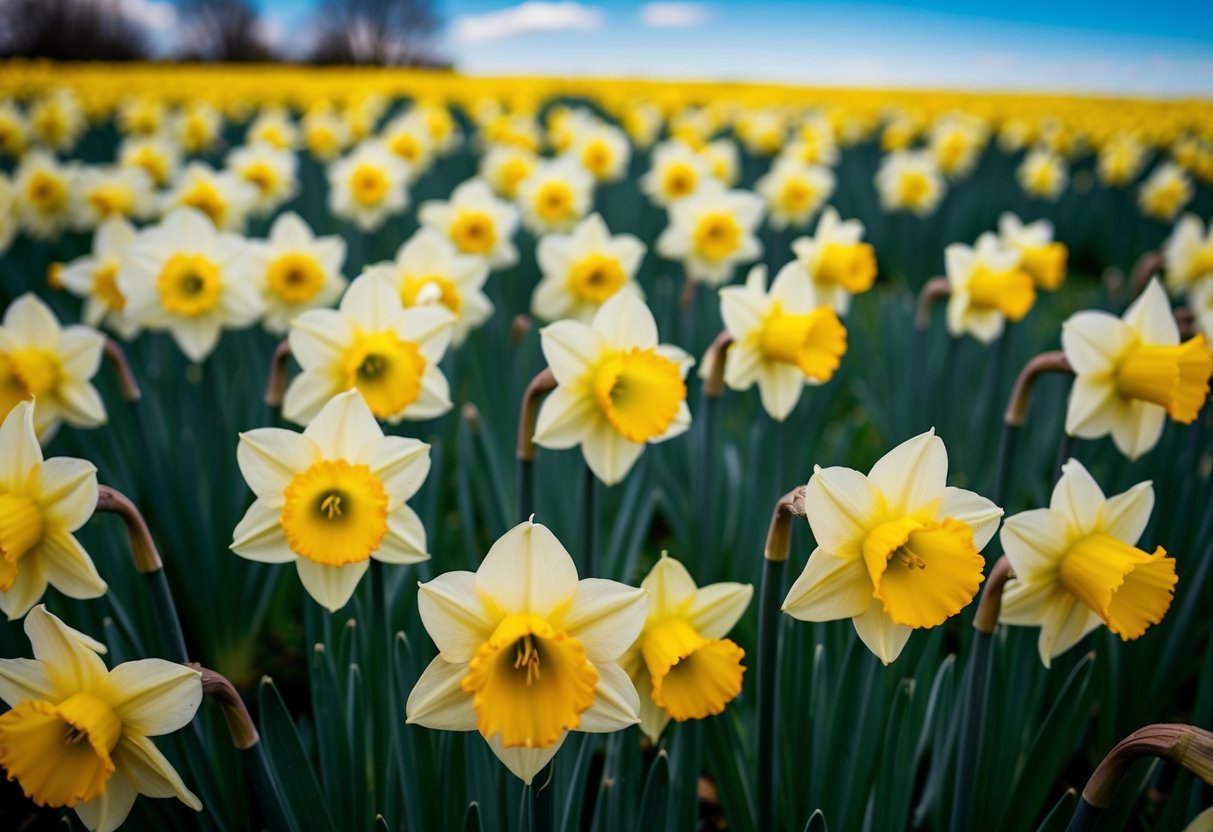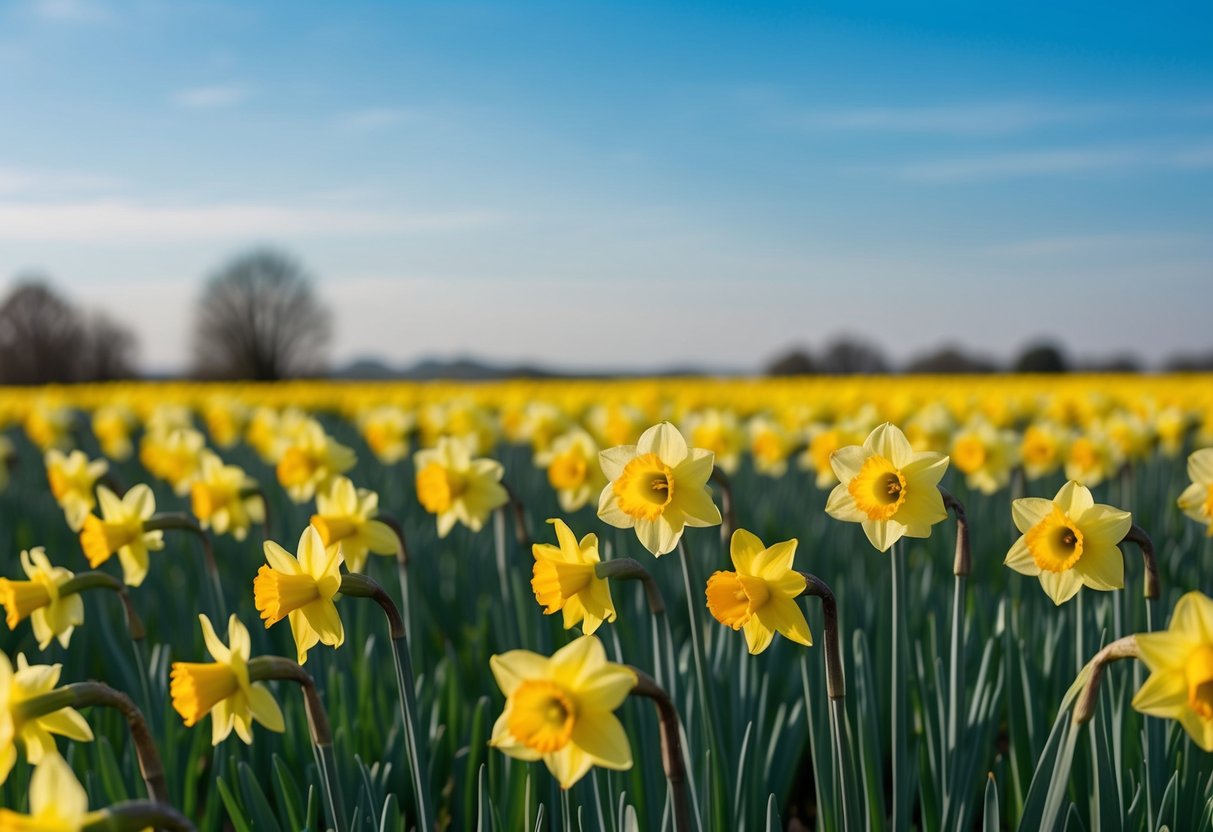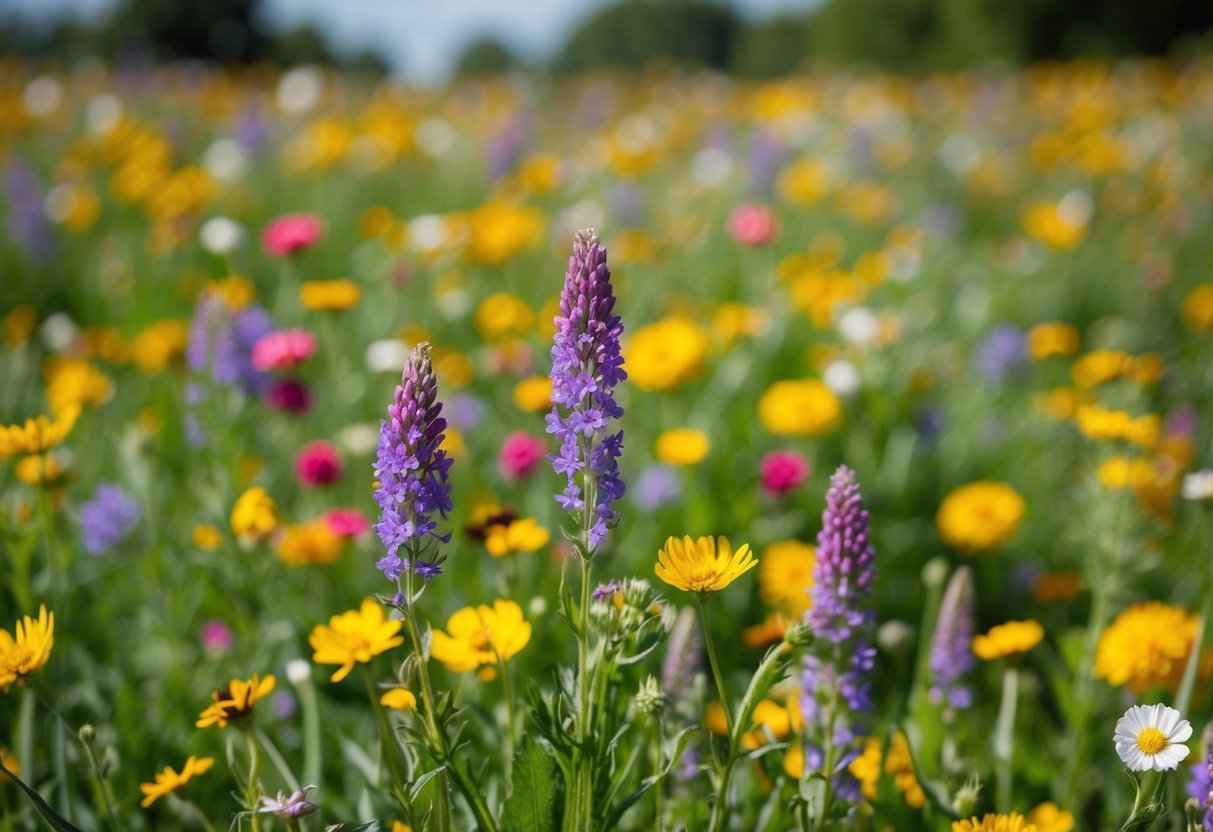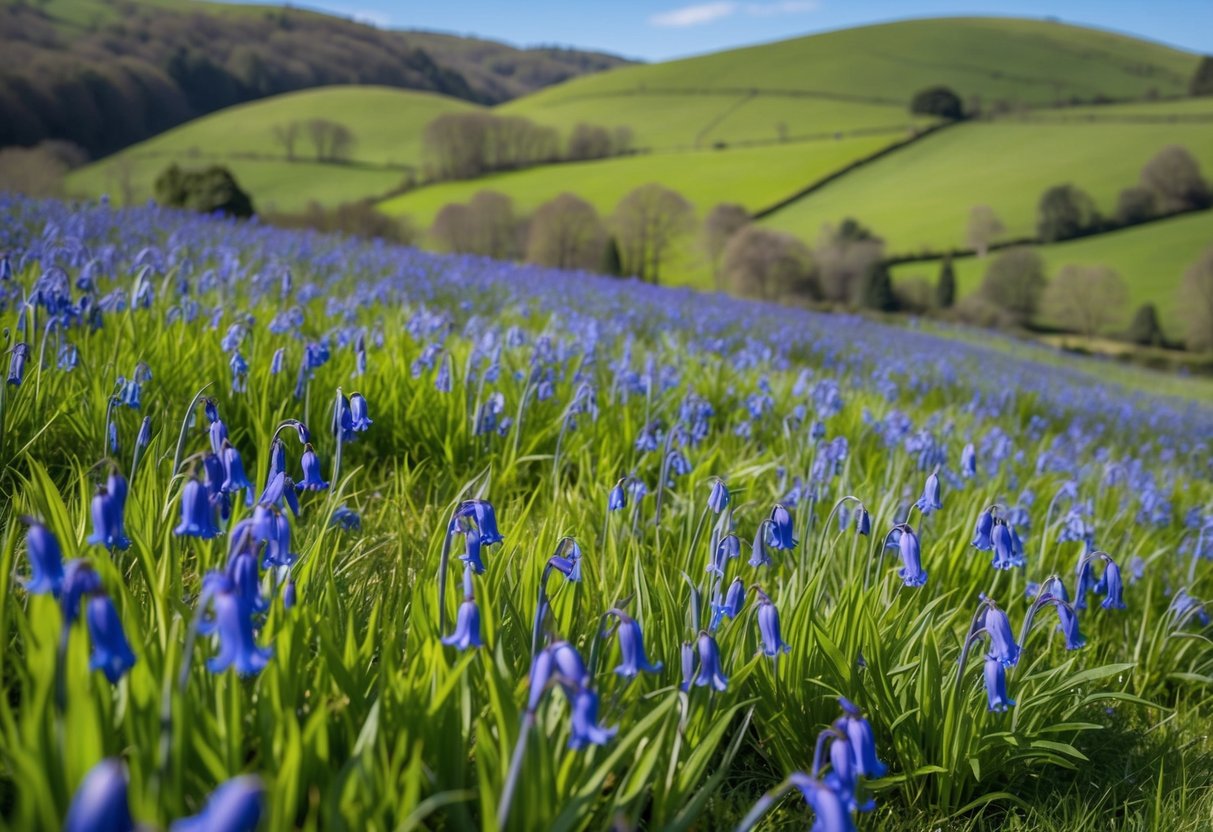What is the Most Common Flower in the UK? Discover Britain’s Floral Favorite
When you think about flowers in the UK, one bloom stands out as a true classic. Whether you’re wandering through formal gardens or admiring a simple bouquet, flowers add beauty and wonder to any setting. The English rose is the most common and adored flower in the UK. Known for its lovely fragrance and elegant appearance, the rose is deeply cherished by many.

As you explore gardens or parks across the country, roses are a familiar sight. From traditional tea roses to vibrant climbing varieties, they come in so many colors and styles. They symbolize love and grace, making them a favorite choice for special occasions and everyday enjoyment.
You’ll also find that roses have a rich place in British culture and history. They’re often part of celebrations, stories, and even symbols for different regions. By diving into the world of roses, you gain insight into a beautiful aspect of British life.
Most Common Flowers in the UK

In the UK, flowers such as daffodils, bluebells, and roses are widely cherished. These flowers not only add color to the landscapes but also hold cultural significance and charm for many people.
Daffodils and Their Significance
Daffodils are bright yellow flowers that often signal the start of spring. You can spot them in gardens, along roadsides, and in public spaces across the UK. Known scientifically as Narcissus, these vibrant blooms are native to Europe and are particularly associated with Wales.
The daffodil is considered a symbol of new beginnings and hope. It even holds a special place as the national flower of Wales, celebrated every year on St. David’s Day. Their ability to add a splash of color to the dull post-winter landscape makes them a favorite among many gardeners.
The Popularity of Bluebells
Bluebells are another flower that thrives in the UK, especially in ancient woodlands. Their vibrant blue hue can create a sea of color in forests and gardens from late April to May. Scientifically named Hyacinthoides non-scripta, this flower is closely associated with the enchanting beauty of the countryside.
Walking through a bluebell wood is a magical experience, often likened to walking through a fairy tale. Bluebells are native flowers in the UK and are legally protected species. You’ll often find them alongside other native blooms like wood anemones and buttercups.
The Quintessential English Rose
Perhaps the most iconic flower of the UK, the English rose, symbolizes romance and beauty. Roses are admired for their exquisite fragrance and velvety petals, making them a popular choice in gardens and bouquets. They are also deeply rooted in English culture, often linked with royalty and history.
Roses can vary in color, size, and type, offering a range of options for gardeners. From climbing roses on garden trellises to the classic blooms found in florists, every variety possesses its unique charm. The English rose is celebrated not just for its looks but also for its historical presence, often linked to tales of English heritage and tradition.
Wildflowers and Biodiversity

Wildflowers play a crucial role in the UK’s ecosystems. They support a wide range of species, from insects to birds. By including native plants in your garden, you can encourage local wildlife and boost biodiversity.
Role of Wildflowers in Ecosystems
Wildflowers are more than just pretty faces. They are vital for supporting biodiversity. In the UK, these native plants provide food and habitat for many creatures. Bees, butterflies, and other pollinators rely on wildflower meadows for nectar.
An acre of wildflower meadow can support about 96,000 honey bees daily. Flowers like cowslip and selfheal have been significant in British culture and folklore. You can explore more about their role in the ecosystem on The Wildlife Trusts’ wildflower page.
Encouraging Biodiversity in Gardens
Adding wildflowers to your garden can make a big difference. Choose UK native wildflowers, such as ragged robin and devil’s-bit scabious, to attract local wildlife. These flowers thrive in the British climate and need less maintenance than non-native plants.
Planting a small wildflower patch or even just a few select species can invite bees, butterflies, and birds. Wildflowers like these help create a mini-ecosystem right in your backyard. You can find ideas on how to start a wildflower garden at the WWF’s wildflower habitats page.
Cultivation and Care

In the UK, growing native flowers like the English rose involves understanding local climate conditions and providing the right care. Learning to plant and care for these flowers ensures they thrive while also supporting local wildlife.
Growing Flower Varieties in the UK
When thinking about planting wildflower seeds, consider species that are native to the UK. These flowers are well-suited to the local climate and require less maintenance. Bluebells and wood anemones are popular choices that bloom beautifully in British gardens. Soil type is crucial; some flowers prefer clay, while others thrive in sandy soil.
Regular watering is essential, especially during dry spells. Mulching helps retain moisture and keep weeds at bay. You might need to choose the right fertilizers to provide necessary nutrients, ensuring healthy growth. Using natural compost is an environmentally friendly option that supports soil health.
Best Practices for Planting
Begin planting in early spring or autumn for the best results. Ensure you prepare the soil properly by removing weeds and adding compost. This enriches the soil, making it ideal for new plants. Space the plants well to allow air circulation, reducing the risk of disease.
Water your garden early in the morning or later in the evening to minimize evaporation. Honeysuckles, for example, need regular watering during dry periods to stay healthy. Check the pros and cons of fertilizers and select what suits your plants and the environment best.
Remember, native species often attract pollinators like bees, enhancing your garden’s biodiversity. By following these tips, you’ll create a vibrant and thriving garden.
Seasonal Blooms

In the UK, flowers bloom in distinct seasons, offering beauty and diversity all year. Each season highlights unique blossoms, adding variety and charm to gardens and landscapes.
Spring’s First Appearances
As the chill of winter fades, early spring flowers like snowdrops begin to emerge. These delicate blooms often brave the coldest months, bringing the first signs of life.
Another spring favorite is the bluebell. You can find vibrant blue carpets in woodlands during late spring. Their striking color and sweet scent make bluebells a treasured sight.
Wildflower meadows also include daisies, which are among the most recognizable spring flowers. These cheerful blooms smile up from lawns and fields, signaling warmer days ahead. Their simplicity and abundance are why people often associate daisies with the onset of spring.
Summer’s Colorful Display
Summer is abundant with color thanks to flowers such as poppies. With their vivid red petals, poppies add a splash of color to fields and gardens. Their display is truly eye-catching during this season.
Ox-eye daisies, larger relatives of the common daisy, also thrive during summer months. These flowers are a perennial favorite for many gardeners due to their size and bright appearance.
The sunflower is another highlight of summer. Known for their towering height and bright yellow petals, sunflowers bring energy and warmth to any garden. They follow the sun’s path throughout the day, a remarkable feature known as heliotropism.
By choosing a variety of blooms, you can ensure that your garden is full of color and fragrance from spring through summer.
Conservation Efforts

Conservation of native wildflowers in the British Isles is crucial for maintaining biodiversity and ecological balance. Protecting native species and engaging communities in gardening initiatives are vital steps to preserve these beautiful plants.
Protecting Native Flora
In the British Isles, native flower conservation is key to sustaining the local ecosystem. Many organizations focus on conserving species like bluebells, which are threatened by habitat loss and invasive species like the Spanish bluebell. By safeguarding areas where these native wildflowers thrive, such as ancient woodlands and protected meadows, you help maintain their populations.
Conservation groups work tirelessly to monitor and manage these habitats. You can support them by volunteering for habitat restoration projects or by joining advocacy campaigns. Awareness and education play important roles too. Learning more about which plants are native and their ecological roles can make a difference. Celebrating these native beauties encourages their preservation, ensuring that future generations will also enjoy their charm.
Community Gardening Projects
Supporting community gardening projects is a fun and effective way to get involved in conservation. Many communities have initiatives dedicated to growing and maintaining native wildflowers. These projects often welcome volunteers and provide workshops to teach you how to cultivate native species.
Community gardens not only add beauty and biodiversity to urban areas but also serve as important refuges for pollinators and other wildlife. Participating lets you meet others who share your passion for flowers and the environment. You can learn about planting techniques, pest management, and seasonal care specific to native flora. Through collaboration and shared resources, community gardening can blossom into a rewarding hobby that benefits both people and nature.







